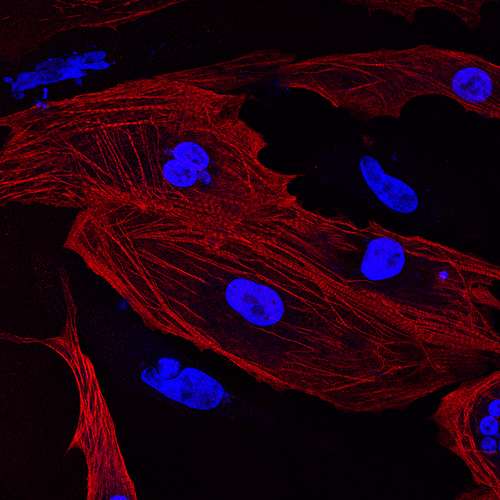Mice research boosts muscle repair capabilities

Research using mice and rat quadricep muscles to better understand muscle repair processes has utilised an artificial medium to study how natural muscle scaffolds repair themselves.
Local scientists developed a medium free from serum (blood plasma) in order to explore the impact that this natural scaffolding material, known as extracellular matrices, has on the muscle repair process.
Extracellular matrices are frameworks that orientate and direct cell growth in tissues enabling cells to develop into particular shapes.
The work formed part of the researcher's search for ways to treat volumetric muscle loss which can be sustained from injuries such as severe car accidents or bomb blasts.
Normally, cells grown in the laboratory are placed on a man-made ECM, or scaffold, to ensure their correct shape and organisation and then placed in solutions that provide vital nutrients for cell growth.
However, these solutions can make it difficult to assess the contribution of ECM molecules due to the additional factors.
In this study the researchers stripped ECM from mice and rat quadricep muscles and then re-seeded the scaffolds with cells to analyse how the ECM directed cell growth.
The serum-free medium the researchers developed preserved a large proportion of the signals from the extracellular matrix molecules and assisted the undifferentiated muscle cells or, myoblasts, to secrete and organise their own extracellular matrix when placed on a substrate.
Matrix vital for correct cell positioning
Co-author Curtin University Professor Deirdre Coombe says extracellular matrices are complex but vital for holding cells in muscle tissue.
"When cells are in a muscle tissue they're not just sitting there in a fluid they're contained within a complex 3D meshwork of different proteins and carbohydrates and that's what serves to organise them," Prof Coombe says.
"In fact, cells in all tissues are correctly orientated and positioned because of their interaction with the extracellular matrix of that tissue."
Whilst the scientists used euthanised mice and rats in this study, Prof Coombe believes the next step in extracellular matrix testing is assessing repair processes on live mice that have sustained an injury.
"We'd like to do some experiments where we'd surgically injure a muscle in a mouse and find out how well these matrices that we are making facilitate the repair process," Prof Coombe says.
"Ideally what we're trying to do is work out the composition and configuration of the matrix in a natural muscle so we can mimic that."




















